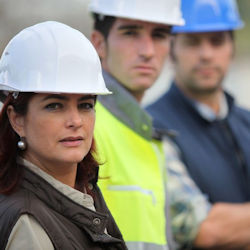Prepare a Safety and Health Policy
Does your company have a written safety and health policy? It should.
A written policy reflects commitment to a safe and healthful worksite, summarizes management and employee responsibilities, and emphasizes the safety and health program's role in achieving that goal.
Keep the policy brief, commit to it, and enforce it. Look at a sample policy (the safety and health policy is on page 4).
Competent Persons (CP) and Qualified Persons (QP)
Certain activities throughout OSHA's standards require completion by either a Competent Person (CP) or a Qualified Person (QP).

These persons must have the training and expertise to evaluate hazardous conditions, inspect equipment, evaluate mechanical systems, or train others to work safely.
Competent Person
A competent person is one who:
- is capable of identifying existing and predictable hazards in the surroundings or working conditions that are unsanitary, hazardous, or dangerous to employees; and
- has authorization to take prompt corrective measures to eliminate them. [1926.32(f)]
A competent person must have authority to take prompt measures to eliminate hazards at the work site and have the experience to be capable of identifying those hazards.
Instruction, training, and experience are ways that an employee can become competent, but attending lectures isn't enough. The employee also needs to be able to demonstrate their capabilities to the employer.
Qualified Person
A qualified person is one who:
- possesses a recognized degree, certificate, or professional standing, or has extensive knowledge, training, and experience, and
- has successfully demonstrated the ability to solve or resolve problems relating to the subject matter, the work, or the project. [1926.32(m)]
A qualified person must have a recognized degree, certificate, etc., or extensive experience and ability to solve problems at the worksite. There may be a requirement for more technical or engineering knowledge.
For example, a competent person can identify electrical components and have a general knowledge of electrical hazards. However, a qualified person would have additional knowledge, skills, and training to do specialized electrical work tasks.
Knowledge Check Choose the best answer for the question.
2-2. As defined by OSHA, a "qualified person" must possess _____.
You forgot to answer the question!
